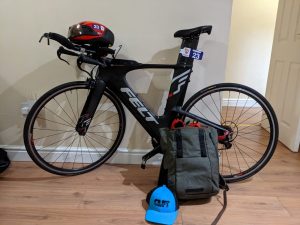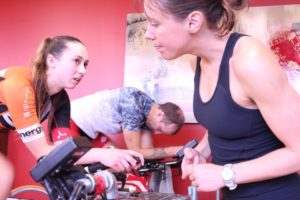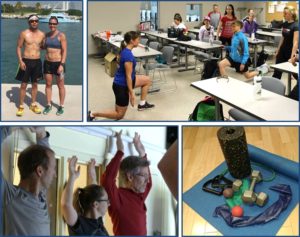As both a Chiropractor and an Endurance Coach working with and developing training programs for triathletes, runners and cyclists I have a multifaceted role in helping athletes prevent, treat and rehab injuries. Each training cycle seems to bring with it a regular series of injuries that could be prevented.
Overall, a dedicated program of stretching and strengthening – as well as a bit of extra attention to running shoe mileage and the surfaces you are running on can prevent most of these injuries, especially if you have a training program that is designed with appropriate periodization for you. Many athletes use foam rolling only when injuries are already an issue, and drop the practice when some progress is made. Making this a regular part of your body maintenance routine will go a long way to helping prevent problems in the first place.
https://www.facebook.com/clperfomancetraining/videos/811345645735549/
Sophie Hotchkiss, an associate coach and trainer at CL Performance Training and a Registered Massage Therapist in-training has put together a video on foam rolling that may be helpful for you to get started on releasing the tissues that tend to get tight in multisport athletes. Make this program a regular part of your pre or post workout session year round, but especially when starting the build phase of your training.
These are a few of the most common injuries that I see in my athletes, and some ideas on how you can prevent yourself from experiencing them.
- Shin Splints: Shin splints are especially common this time of year as people start to build up their running mileage and intensity and begin to run on snow and ice outside. A running program should not be increased more than 10-30% per week depending on the athlete and their running history, and that includes a combination of both volume and intensity. The unsteady surface of snow and ice outside increases the work of both your major muscle groups and stability muscles of the lower leg, making shin splints more likely. Running shoes with too much mileage on them is the other major cause of shin splints. Pay attention to your shoes – try and replace them at least every 500km (if you’re running a lot, do the calculation as you probably need new shoes much sooner than you think!). When you start to feel shin splints that hang around for a couple of days it’s time to take a rest and let them heal – these guys can eventually lead to a tibial stress fracture if they, and the causative factors, are not dealt with.
- Achilles Tendinitis: Achilles Tendonitis is another injury that is related to increasing run mileage and intensity too quickly and running on snow and ice where the lower leg muscles have to work much harder. Achilles pain can also be related to increasing hill training, trying to change your running form to a more midfoot or forefoot strike all at once, tightening of the calf muscles and associated decreased mobility of the foot and ankle joints, and shoes that need to be replaced. Achilles Tendinitis can be an injury that sticks around for quite a while since the tendon doesn’t have a lot of blood supply, so the best thing to do is to do whatever you can to avoid this altogether!
- Piriformis Strain or Syndrome: Because running is a straight line repetitive sport it ends up that the same muscles are used and the same one’s are not used over and over again. The hip flexors work to drive the knee forward with each stride and thus over time can become tight and overworked. This in turn will inhibit the glutes (and piriformis) slightly, making them now in charge of the same amount of work with less available muscle fibres. Piriformis ends up tightening too much which results in pain in the area of the hip and/or glute and over time can end up putting stress on the sciatic nerve. Spending specific time stretching the hip flexors with a variety of lunge type stretches and rolling out the quads and muscular portion of the IT band can help to prevent this.
Dr. Cindy Lewis-Caballero is the founder of CL Performance Training. She is an endurance coach, a Chiropractor, a personal trainer, a professional triathlete, and a mom. She has a hands-on understanding of the most common injuries her athletes face, and the process of helping them rehabilitate to continue pursuing their goals.



